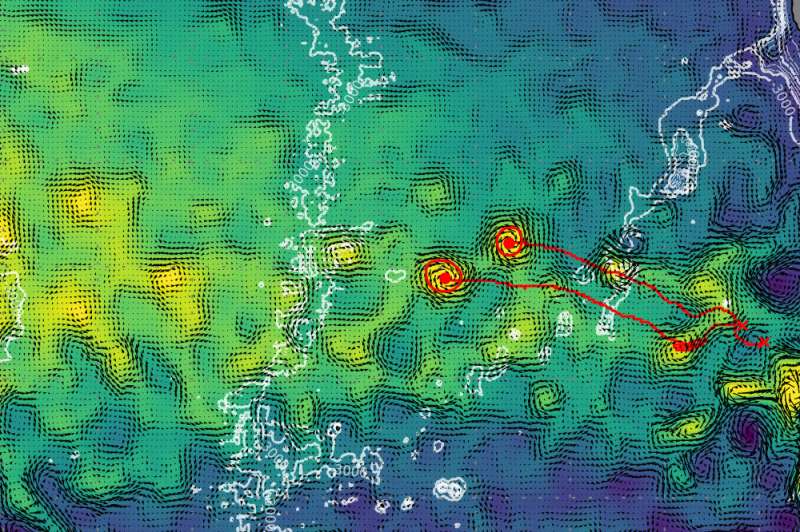Efficient eddies carry warmer waters across the Atlantic

Eddies formed off South Africa can trap and transport water across the vast expanse of the Atlantic to Brazil, and, in doing so, make an important contribution to the global climate.
Agulhas, the Cape of Needles, is a rocky headland in South Africa. Its location as the most southern point of the African continent means it protrudes out into the region where the Indian and Atlantic Oceans meet, and where the Agulhas Current – a swift, powerful flow down the east coast of South Africa – turns back on itself. Here, in this basin, a leakage occurs, as vast amounts of warmer, saltier water from the Indian Ocean seeps steadily into the Atlantic. This transport, known as the Agulhas Leakage, is an important contributor to the South Atlantic Gyre.
Eddies are swirling, circular bodies of water, and the Agulhas eddies that spin off from the leakage keep a tight hold on the waters within them. Over a few years, they slowly make their way across the Atlantic toward the coast of Brazil. By combining surface observations via satellite and the data collected by Argo floats beneath the sea surface, PML scientists have followed the lives of three eddies and have been able to shed even more light on the epic journeys of ocean waters around the world.

Using satellite imagery, the researchers tracked two eddies that formed in the Cape basin west of South Africa. These whirls of water, 200 km in diameter, reached the Mid-Atlantic Ridge almost two years later, where they merged and formed a third eddy. This final form continued on its long journey, eventually dissipating another year later when it arrived at the continental shelf off the coast of Brazil. By also analysing Argo float profiles, it was discovered that these steady eddies extended to depths of over 1500m and that their dynamics were affected by ridges encountered along their route.
This transport of water to distant seas is an important part of a bigger picture. The eddies and their contents contribute to the Atlantic meridional overturning circulation (AMOC), a vast system of currents in which heat and salt are redistributed throughout the ocean, and an integral component in the global Earth system and climate.
Lead author, Francesco Nencioli, of Plymouth Marine Laboratory's Remote Sensing Group, said: "Thanks to remote sensing observations, Agulhas eddies were already known to be the largest and long-lived eddies in the world. By combining satellite observations with in-situ Argo profiles, we were able to quantify for the first time the efficiency with which these features carry waters across the whole South Atlantic basin".
More information: Nencioli, F, Dall'Olmo, G & Quartly, G. (2018) Agulhas ring transport efficiency from combined satellite altimetry and Argo profiles. Journal of Geophysical Research. DOI: 10.1029/2018JC013909
Journal information: Journal of Geophysical Research
Provided by Plymouth Marine Laboratory



















